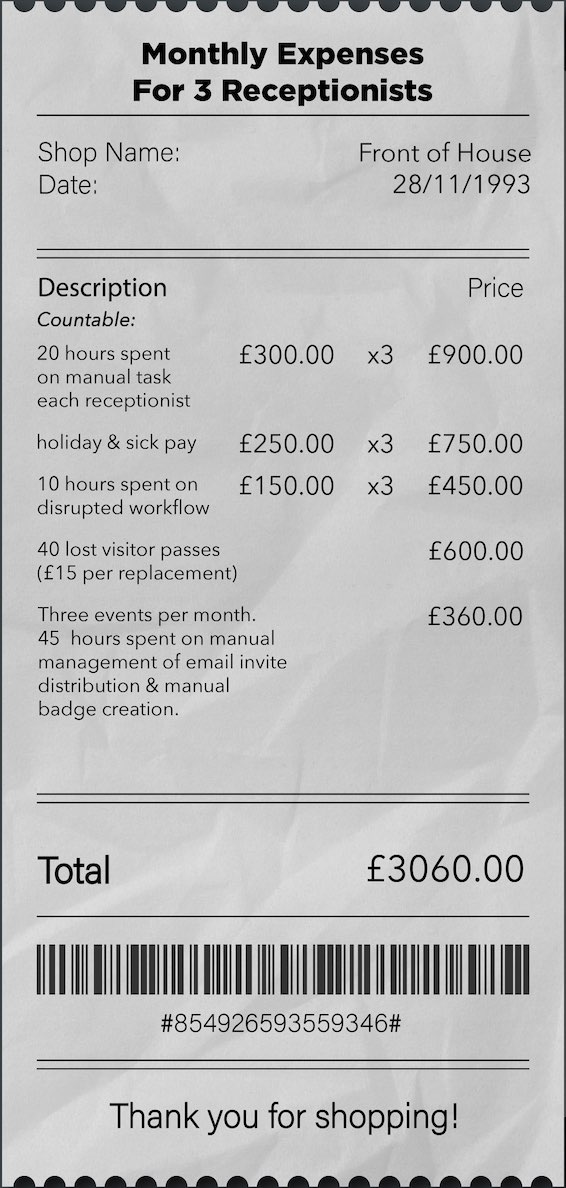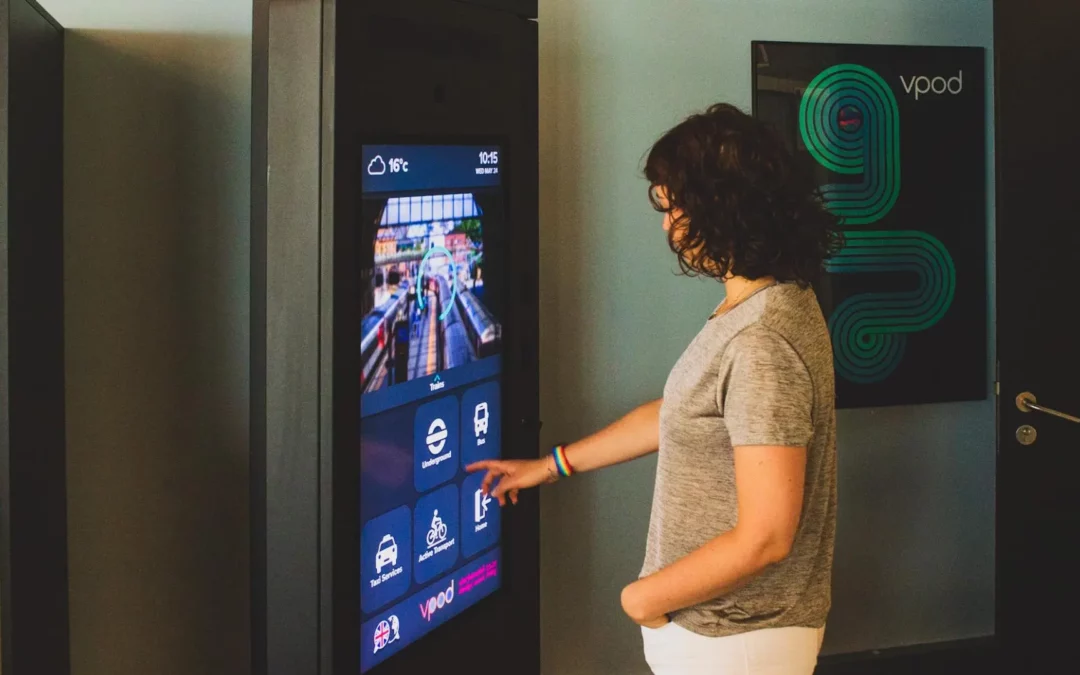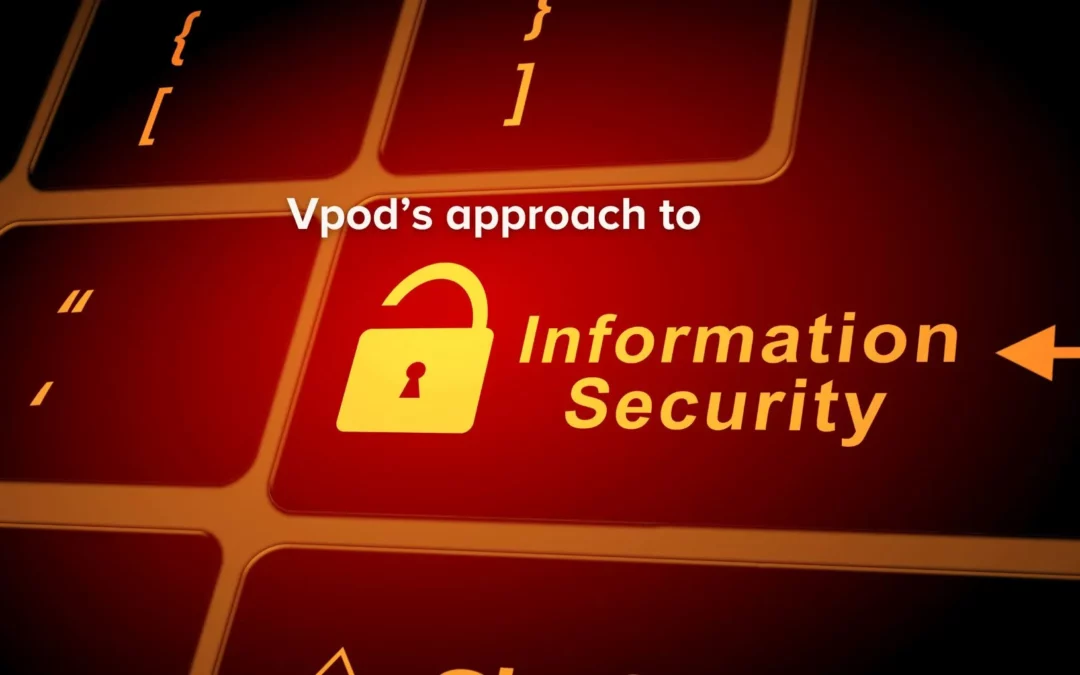Convincing stakeholders to invest in technology such as visitor management software can be a challenge. Calculating the financial Return on Investment (ROI) is one part – an important step, of course – but money is not the only thing at stake: what if we can present a more comprehensive ROI evaluation that takes both quantity and quality into account?
The intangible ROI relates to how technology can positively impact those who interact with it at the workplace. You can’t quantify the value of customer loyalty and brand perception, but they have a much bigger influence on a company’s bottom line than you may think.
So, how do you measure intangible ROI for visitor management software?
In this blog, we present a more comprehensive way to measure ROI; from short-term benefits to the long-term impact of both tangible and intangible ROI.
What is Visitor Management Software?
Visitor management software is a technology that helps streamline and automate the visitor management process by monitoring, tracking, and recording visitor information. Visitor management generally includes any process that helps your organisation keep track of visitors.
Any facility with people who come and go throughout the day will have to establish some form of visitor management as part of basic safety protocols, but not all systems work equally well.
How much does Visitor Management Software cost?
The exact price of visitor management software can vary; it greatly depends on product quality and your organisation’s specific needs in terms of visitor and workplace management. The price plan of modern visitor management solutions is mostly SaaS (Software as a Service) based, with additional costs for integrations, software support, and hardware requirements. On average, a monthly subscription can cost anywhere from £20-£1000.
There is no one-size-fits-all solution.
We always advise you to thoroughly research what each VMS service provides and how the solution can be implemented best at your reception.
For high-quality products, vendors will offer personal consultations to help clients achieve their specific goals. No company’s workflows are the same, so, “what is the cost of visitor management software” is a near-impossible question to give a general answer to.
Now, if you’re asking yourself “how do I measure the ROI to convince my internal stakeholders?”, keep reading.
What is the ROI of Visitor Management Software?
The tangible impact of VMS can be measured by looking at the cost of implementation and subscription against the money saved on administrative costs, ineffective work, compliance risk, and digital efficiency – but that does not give the complete picture.
Rather than just looking at the profit and cost which can be measured and compared, companies should take an approach that is not solely number-driven or quantitative, but instead human-centric and qualitative – the intangible ROI.
Here’s a guide for things to consider when measuring the ROI for your visitor management software:
The tangible ROI of Visitor Management Software
1. Reduced daily administrative cost
First, you can look at the number of repetitive jobs your receptionists do in order to calculate how many hours of paid manual tasks you can save with an optimised system. By upgrading your visitor management process, you can utilise your resources and staff for more high-value work – saving money and improving productivity, all while guaranteeing consistent customer service.
Let’s break it down with an example:
Assume your company employs 3 receptionists at £15/hour. Without the help of software for visitor management, their workload includes manual check-ins, data collection, badge printing etc.
If each check-in takes 6 minutes and you have an average of 200 visitors a month, the hours spent on manual check-in comes to 20 hours, costing £900/month.
The calculation looks like this:
However, as shown in the receipt, here are a few more factors to consider and calculate:
- 10 hours of disrupted workflow = £450/month.
- 24 hours of event management (visitor badge printing, email invites etc.) = £360/month.
- Required holidays and sick pay for staff = £750/month.
- Lost 40 visitor badges: at £15 each = £600/month.
The total cost comes to £3,060/month for work that could be done much more efficiently.
2. Reduced labour costs
Saving on reduced headcount is an obvious point to look at. If your FOH is using more reception staff to process peak traffic, the money saved on headcounts by introducing self-service kiosks is significant.
When the manual tasks are removed, you eliminate the need to over-staff your reception in anticipation of high-traffic periods, which saves labour costs and improves efficiency.
To explain it further, visitor traffic is unpredictable – especially in these post-pandemic days when many work on a hybrid or remote basis. With an under-staffed reception comes the dreaded queues and frustrated visitors, while an over-staffed reception means essentially paying people to simply stand and smile. Even having a fixed number of receptionists is likely to still be cost-inefficient as traffic continues to fluctuate throughout the day.
With VMS, the number of receptionists can be reduced or repurposed in other areas of the business that will bring true value to the guest experience.

The diagrams show the inefficient use of fixed reception staff throughout the day.
3. Improve compliance procedures
If you’ve ever had to pay the price for non-compliance, you know the struggle of a disorganised system. To measure the ROI of the software, you should also include both the risk of adopting the new technology and the risk of not adopting it – the compliance risks.
A visitor management software reduces this cost to zero as all details, documents and information are easily recalled and/or erased when required. Unfortunately, “I can’t find the files, but I swear I have them” is not a valid excuse when you risk being fined millions of euros for not being GDPR compliant.
For any organisation that cares about health, safety and integrity, compliance should be a priority. When regulations change, your risk of non-compliance increases. A virtual reception with visitor management software is a proactive approach to staying compliant and lowering the risk of breaching regulations.
4. Increased digital efficiency
Digital efficiency is a term we use for the efficiency score you achieve by digitising parts of your business process. With more efficient processes and better-managed databases, you not only save on labour costs but also time and effort. To quantify your digital efficiency, you can consider the number of manual tasks involved in the visitor management process:
Collecting and re-keying visitor details are some of the most time-consuming FOH tasks, but by digitising this you can increase your digital efficiency by 30%. With automatic meeting invites, badge printing, and host notification, it can increase by another 30%.
Digital efficiency is not just about getting the latest tech, it goes much further; it’s about improving what you have and finding solutions to what you lack! Modern visitor management systems provide flexible software that ensures regulatory compliance.
5. Save on up-keep of legacy applications
Lastly, you can compare the cost of updating your existing legacy application to what you save by using cloud-based visitor management software. If you depend on a legacy system, you’re likely spending a substantial part of your IT budget on upkeep and potentially an expensive outdated subscription. Even if the initial cost of a modern visitor management solution is higher than running the legacy system, consider the money you can save in subsequent years.
Modern visitor management software is a more viable solution in the long run: it is consistently upgraded and can be updated with whatever features, applications or customisations you need, giving your organisation the ability to adapt to changing trends and new technology.
The intangible ROI of Visitor Management Software
The intangible ROI relates directly to the core of your business; the people. They are key to driving the success of the business. Therefore, it’s incredibly important to consider ROI toward employee well-being, engagement and happiness, as well as customer retention and loyalty. As noted by CTO S. Rajurkar, companies who tend to value these intangible benefits during technology decisions/investments do well in the long term.
Here are things to consider as intangible ROI:
1. Higher job satisfaction & lower staff turnover rate
A dynamic digital workplace ecosystem helps motivate employees by simplifying complicated and time-consuming tasks. Reliable employers who actively work to help employees will naturally foster a comfortable environment with satisfied workers, and a virtual reception kiosk is a great way to effectively improve most in-house processes.
The whole purpose of visitor management software is to facilitate a safe and healthy workplace environment by supporting both workers and visitors. This way, your reception staff can enjoy delivering a concierge-style service to guests and employees. With higher job satisfaction, you’re less likely to see high rates of employee turnover, which means you can save money and time on training new staff, and improve overall productivity.
2. Stay competitive
Manual visitor management has functioned just fine historically – because it had to. But to use a cliché term; “in this day and age”, where technology has been designed to help automate tedious tasks, the companies who never explore new solutions simply never evolve.
Visitor management software can help you make informed business decisions: by monitoring the real-time data from your properties, you gain valuable insights into the daily workflow and can review when the time is right to increase capacity.
If you ignore technological changes, you risk getting left behind when your competitors eventually upgrade. To gain that all-important edge, you need to keep an eye on how the digital world transforms, and the quickly expanding market of visitor management systems is particularly worth looking at.
3. Strengthen brand perception
The reception sets the tone for what people can expect during their visit, so you don’t want to give them a bad impression out of the gate. Visitor management software allows for seamless check-in; by simply scanning a QR code, visitors can notify their host and get through reception in seconds. And if they need help finding the way to the meeting room, navigation only takes a moment.
Good customer service strengthens consumers’ trust and improves their perception of your brand. Investing in good visitor management software lets visitors and customers know that a company cares about customer service and giving visitors a good experience.
What is the long-term return on Visitor Management Software?
There are two ways to look at your return when investing in visitor management software: the immediate impact after the onboarding period in terms of reduced labour costs and increased efficiency, and the long-term impact on sustainable growth.
Sustainable growth
Visitor management software facilitates sustainable growth for your business, allowing for the main focus to be on productivity and growth rather than software maintenance. It is scalable as the business expands while remaining connected as a cloud-based and completely integrated platform.
Thinking ahead is key in today’s business landscape. After all the money you spent on upgrading your systems, the last thing you want is for the software to be outdated in 2 years. Modern visitor management software is not only practical and intuitive but has the ability to adapt for many years to come.
A better understanding of your workplace
Furthermore, visitor management software helps you understand the flow of your workplace more deeply. This helps you make better and more informed business decisions when looking into what could be done to refine the current workflow.
Case study: Vanessa by Vodafone – ROI with Vgreet
Vgreet is a virtual reception kiosk that handles all things visitor management related – and more. Vpod actively works with clients to tailor a solution that fits their visitor management needs.
Through Vgreet, Vodafone managed to reach their goal of streamlining the entire visitor management process, allowing their reception teams to focus on delivering a more personal concierge-style service to their guests.
Since installing Vgreet, Vodafone has seen a substantial return on investment of £80,000 in the first year and £175,000 in the second year.
Read additional case studies and take a closer look at how Vpod supports customers in implementing a smart workplace here.
What other Investments do you need to consider?
To make sure the full scope of investment is clear, make sure to seek out VMS providers who can advise you throughout the entire process.
We want to give you to be well prepared, so here are 5 things you should consider when choosing a provider:
1. What kind of software license do you need?
Different license levels offer different features and support, so you must first figure out which level of license suits your business need the most. To get an idea, you can use free trials or seek support from industry professionals.
At Vpod, we take a consultative approach to understanding our customers’ needs. From tailoring the right solution to advising the best practice to improve your reception, our experts will advise the most suitable license package for you.
2. Where will you get the hardware?
The visitor management software is only half of the equation – without a body, the brain won’t be able to do its job. The options in the market include tablets, either hand-held or mounted on stands, iPads, or a sophisticated virtual reception kiosk.
Whatever the case, you need to know if it is part of the service, or if tablets, QR code scanners, badge printers etc. need to be considered as additional costs.
Vpod’s virtual reception kiosk, Vgreet, is an all-in-one solution that includes all hardware and market-leading visitor management software as a package.
3. Who can provide IT support?
Look into whether IT support is included in the subscription, costs extra, or must be found elsewhere. You should choose a provider who can back up the quality of their products with excellent support and customer service.
Vpod’s all products include ongoing IT support and advice within the package before, during, and after implementation.
4. How will onboarding be managed?
The time required to spend on adapting to the new technology and the changes in your organisation’s processes is the soft cost of the investment you need to consider.
Can you get user manuals and official introduction sessions to help make the transition easier?
At Vpod, we want to build true partnerships that go beyond selling a product. From training to configuration and installation, we are hands-on in every step of the deployment cycle to minimise the soft cost of your investment.
5. Do you require any special features?
Make sure to consider any potential extra costs and benefits of adding any special features. Be sure to check whether providers offer adaptable software that can connect siloed systems, or if the offer is a complete ecosystem with their own applications and alternative solutions.
Rather than purchasing a whole ecosystem when your workplace is already comfortable with established solutions, Vgreet has the flexibility to connect different systems and integrate them onto the platform.
Summary
In short, fully understanding the investments requires clear communication with the provider, industry experts, and internal stakeholders. When the people within your organisation understand the reasons for change, they more easily adapt, even if they disagree.
The key purpose of this article is to help you to quantify some of the ROI of visitor management software, and look at more than just the economy: intangible returns have just as much, if not more, impact on the success of a business in the long run. Therefore, you should make sure to include both the tangible and intangible benefits when measuring the ROI on visitor management software.
Calculate the ROI yourself here
Cost savings
- Immediately quantifiable savings from administrative work, headcount reductions, and hours spent on audit preparation.
- Long-term noticeable impact on risk reduction and compliance violation penalties.
- Savings on the upkeep of legacy systems – many VMS subscriptions include specialised IT support.
Productivity
- Fewer manual tasks at reception.
- Easy and convenient communication with integrated systems.
- No lost employees or un-updated schedules means meetings start on time.
Business growth
- Brand reputation.
- Job satisfaction and reduced employee turnover.
- Competitive advantage.
- Understand your workplace & workflow better
Interested in Vgreet virtual reception? Download the brochure or Contact Us








